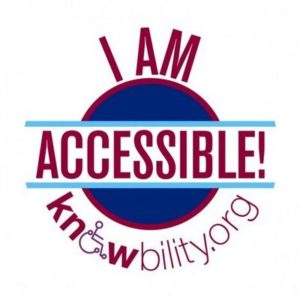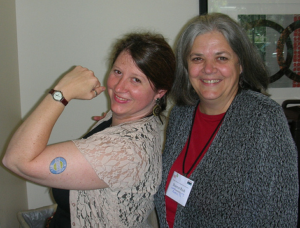There is free software and there is open source software. They aren’t the same thing. But whatever they are — WHY AREN’T YOU USING THEM?!
Free software refers to software that grants you the freedom to copy and re-use the software, rather than to the price of the software. The Free Software Foundation, an organization that advocates the free software model, suggests that, to understand the concept, “think of free as in free speech, not as in free beer.” (“The Free Software Definition”. GNU.org. Retrieved Jan. 12, 2011). It’s often refered to as FOSS (Free and Open Source Software).
Open source software allows users to study, change, and improve the software at the code level, rights normally reserved for the copyright holder. Open source, in contrast to free software, accepts the idea that people might build proprietary extensions to open source programs. In fact, most open source software does not come from open source companies, or the open source community. (more here).
You don’t have to be a programmer to use these tools; they are ready for you to download and use right away, just like proprietary software. But I’m sorry to say that most of you — nonprofits, NGOs, government agencies, indivdiual users, etc. — remain afraid of these amazing tools. And in this time of dire economic news, it’s long overdue for you to embrace FOSS and Open Source.
Since January 2008, I have used FOSS software for my office software needs (word-processing, slide show/presentation development, spreadsheets, simple databases), as well as for email, for browsing the web, for creating graphics, for altering graphics and photos, for design of various printed publications, to develop material for and manage my web sites, and on and on. And most of you that I work with haven’t noticed: you send me something in whatever you use — usually some Microsoft product — and I work on it and send it back to you and you are none the wiser. Or I send you something I’ve created in my FOSS software and you have no idea — you just open up what I send and it looks just like something created in proprietary software. There are the occasional translation issues — sometimes the fonts don’t translate ideally between NeoOffice and Microsoft Powerpoint, for instance, or the bullets in a word-processing document sometimes goes wonky from one software to another — you know, the same problems that happen between different versions of the same software. But for the most part, it’s worked oh-so-well.
I’m in good company: there are entire countries that get FOSS. Sourceforge, a web-based source code repository that acts as a centralized location for software developers to control and manage open source software development, gets more traffic from Brazil, Russia, India and China (the so-called BRIC countries) than it does from the good old USA. These countries have a top-down approach to open source, with government and schools adopting it as a matter of policy, and this has led to a large increase in the voluntary adoption of Linux and open source by businesses there. (more about this here).
Africans are in on the game: Ushahidi (it means testimony in Swahili) was created by Kenyan programmers around that country’s 2007 election, was deployed in South Africa and Uganda during 2008, and was used to crowdsource reports on the Haiti earthquake this year. The software maps SMS text messages. Even people in the Sudan have access to text messaging now. And the benefits flow worldwide — here is a crime map, created using Ushahidi software, covering part of Atlanta. Read about the May 2010 Idlelo conference in Ghana, which Dana Blankenhorn blogged about in June; as he says, “it was a small thing, but it may have been the most important open source conference so far this year.” Indeed! As he notes, “Because open source gives you equal rights with other software developers, it can be used effectively to localize software in small language groups, such as those found across Africa.”
So many NGOs, community organizations, schools, government agencies and others in developing countries (and even in so-called developed countries) struggle with software costs, and many resort to using illegal copies of MS and other popular software, meaning they have no official support for these products — and, in most places, they are breaking the law by using these illegal copies. I saw it for myself in Afghanistan and Egypt. Those of us who claim to be trying to help nonprofits, NGOs, grassroots organizations and others have an obligation to let these initiatives know at least about free office suites that offer viable alternatives to using illegal software or paying the huge fees to use MS and other products. There is really no excuse not to.
Convincing nonprofits, NGOs, government agencies, individual users and others that I work with to embrace FOSS and Open Source remains a massive challenge. You all remain skeptical. You have worries about security, stability, being able to work with documents generated by people using other software, features, and on and on — never mind that FOSS proves again and again to be just as secure, stable, frequently-updated, feature-rich and reliable as proprietary software.
Evaluate and choose free software the same way you choose fee-based software:
- how long has the software been around?
- how often is the software upgraded?
- how much documentation for the software is provided?
- is there an online forum where users freely post questions and offer support to each other?
- look for reviews of the software (these are very easy to find online). Read many different reviews from many different sources, not just one or two, and not just the “official” review from the software’s manufacturer(s).
- beware of unsolicited email offers or web page pop-ups for free software. These are often associated with malicious software, viruses, and scams.
It’s easy to find quality free, open source software. When such is reviewed by web sites, magazines and other sources that review proprietary software, links are provided to download the software yourself. For Macs, my favorite source to find such software is Opensourcemac.org. For Mac users and non-Mac users alike, try C-NET’s download.com.
If you are wondering how to get started, I recommend that to do so when it’s time to upgrade your office software (word-processing, spreadsheets and presentations). For Mac users, try NeoOffice. For non-Mac users, try OpenOffice. (2021 update: I switched all my devices to LibreOffice years ago).
It’s not easy to make the switch from one software to another. Bruce Byfield notes: “When you first switch to a different software, any claims that its better than what you were using probably won’t fly.” You will be too busy trying to find your favorite features and functions, first believing that they don’t exist and then, once you find them, thinking they aren’t as good. But being able to use different software than what you have been used to is a learned skill, and will make you a better user of all software. And there’s also the reality that some upgrades of your favorite fee-based software are so radically different from what you have been using that it’s the same experience as switching to a completely different package — in other words, there’s no getting away from having to continually learn how to use software, even if you choose not to switch to open source.
If you discover that a feature really, truly isn’t a part of the free software you are eyeing, remember more words from Bruce Byfield: “features are an arms race in which superiority rarely lasts for more than one version.”
Also see:
Breaking Barriers: The Potential of Free and Open Source Software for Sustainable Human Development – A Compilation of Case Studies from Across the World — this free publication (103 pages, PDF), features 14 projects using free and open source software (FOSS) to help bring about socio-economic development and empower people in developing countries or regions in Africa, Asia-Pacific, Europe and Latin America. The benefits obtained, challenges encountered, and lessons learned are highlighted. The benefits offered by free and open source software (FOSS) have been extremely useful for developing countries around the world. In particular, the ability to obtain and upgrade FOSS without licensing fees has proven to be beneficial to users in these regions as this makes information and communications technology (ICT) more affordable for them. With the publication of this compilation, it is hoped that there will be greater awareness of the ability of FOSS to empower and help poorer and less developed communities.
A new version of the free NOSI primer “Choosing and Using Free and Open Source Software: A Primer for Nonprofits” has been released. This is a no-nonsense, easy to read report that helps nonprofits understand what free and open source software (FOSS) is, what options are available for their organizations, and how they can access support for using FOSS. The primer includes all of the basics, and also discusses how to look at TCO and strategic value in making decisions about FOSS. There are many case studies describing the use of various FOSS applications in the nonprofit sector. It also includes a live feed via API from Social Source Commons of a particular set of 5 FOSS toolboxes: software for the server, for the web, and for the three flavors of desktops, Windows, Mac and Linux. You can read this guide on the web or download it in PDF. NOSI is looking forward to your feedback and contributions; create an account on the NOSI site to comment on the primer.
Tech@State will explore Open Source at its event on Feb. 11. That includes subjects like:
- Open Source vs Government Culture: Creating Change
- Open Architectures for Public Health
- What’s the Status? Federal Open Source Acquisition and Policy
- Open Source Software: Enabling National Security
- Open Source To The Rescue: Disaster Response & Humanitarian Assistance
- Open Cities and Open States
- An Open Model for Social Change: Changing Philosophies About Development and Aid
And my own previous blogs on this subject (sorry, these links actually no longer work and are not archived at archive.org):
the power of open source and volunteers (20 March 2009)
Will the donor dictate the Girl Scouts discussion? (4 March 2009)
I am not a techie & I use free, open source software (22 January 2009)
Free, GREAT alternative to MS Office? You bet! (18 June 2008)
Grandma can run Umbuntu Linux (13 March 2008)
open source primer for nonprofits (22 October 2007)
NeoOffice & OpenOffice (5 May 2007)





